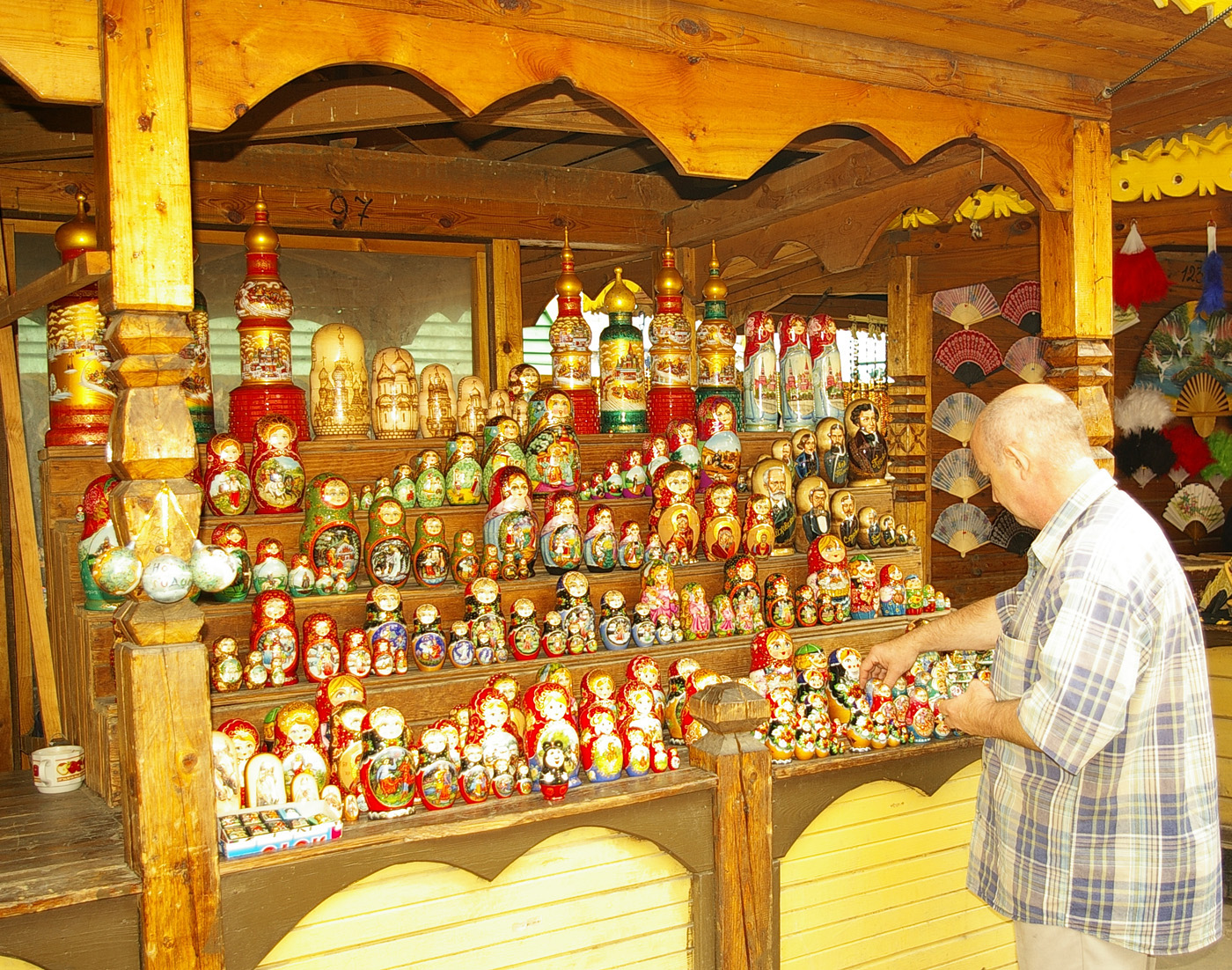|
Matryoshka Doll
Matryoshka dolls (), also known as stacking dolls, nesting dolls, Russian tea dolls, or Russian dolls, are a set of wooden dolls of decreasing size placed one inside another. The name ''Matryoshka'' is a diminutive form of ''Matryosha'' (), in turn a hypocorism of the Russian female first name '' Matryona'' (). A set of matryoshkas consists of a wooden figure, which separates at the middle, top from bottom, to reveal a smaller figure of the same sort inside, which has, in turn, another figure inside of it, and so on. The first Russian nested doll set was made in 1890 by wood turning craftsman and wood carver Vasily Zvyozdochkin from a design by Sergey Malyutin, who was a folk crafts painter at Abramtsevo. Traditionally the outer layer is a woman, dressed in a Russian sarafan dress. The figures inside may be of any gender; the smallest, innermost doll is typically a baby turned from a single piece of wood. Much of the artistry is in the painting of each doll, which can be ... [...More Info...] [...Related Items...] OR: [Wikipedia] [Google] [Baidu] [Amazon] |
Vasily Zvyozdochkin
Vasily Petrovich Zvyozdochkin (; 1876–1956) was a Russian woodturner, wood carver and doll maker. He is credited with making the first Russian matryoshka doll Matryoshka dolls (), also known as stacking dolls, nesting dolls, Russian tea dolls, or Russian dolls, are a set of wooden dolls of decreasing size placed one inside another. The name ''Matryoshka'' is a diminutive form of ''Matryosha'' (), i ... (painted by Sergey Malyutin) in 1890. Vasily Zvyozdochkin was born the eldest son in a peasant family in the village of Shubino, Voronovskaya volost. References Василий Звездочкин - отец русской матрешки (Vasily Zvyozdochkin - the father of Russian Matryoshka) Подлинная история Матрешки. Часть третья: Василий Звёздочкин(The true story of the Matryoshka Doll. Part Three: Vasily Zvezdochkin) Inventors from the Russian Empire 1876 births 1956 deaths Dollmakers {{Russia-bi ... [...More Info...] [...Related Items...] OR: [Wikipedia] [Google] [Baidu] [Amazon] |
First Matryoshka Museum Doll Open
First most commonly refers to: * First, the ordinal form of the number 1 First or 1st may also refer to: Acronyms * Faint Images of the Radio Sky at Twenty-Centimeters, an astronomical survey carried out by the Very Large Array * Far Infrared and Sub-millimetre Telescope, of the Herschel Space Observatory * For Inspiration and Recognition of Science and Technology, an international youth organization * Forum of Incident Response and Security Teams, a global forum Arts and entertainment Albums * ''1st'' (album), by Streets, 1983 * ''1ST'' (SixTones album), 2021 * ''First'' (David Gates album), 1973 * ''First'', by Denise Ho, 2001 * ''First'' (O'Bryan album), 2007 * ''First'' (Raymond Lam album), 2011 Extended plays * ''1st'', by The Rasmus, 1995 * ''First'' (Baroness EP), 2004 * ''First'' (Ferlyn G EP), 2015 Songs * "First" (Lindsay Lohan song), 2005 * "First" (Cold War Kids song), 2014 * "First", by Lauren Daigle from the album '' How Can It Be'', 2015 * "First", ... [...More Info...] [...Related Items...] OR: [Wikipedia] [Google] [Baidu] [Amazon] |
